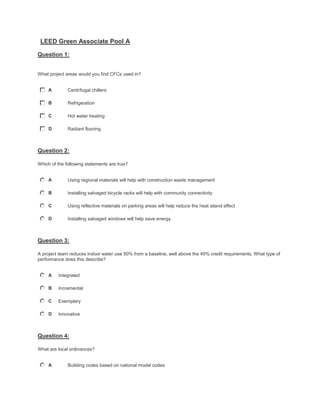This document contains 40 multiple choice questions related to the LEED green building rating system. The questions cover topics such as LEED credits and prerequisites, sustainable building strategies, minimum program requirements, and definitions of common terms. Sample questions ask about materials that contain CFCs, strategies to earn Sustainable Sites credits, components of a building budget, and standards that protect the ozone layer.




























